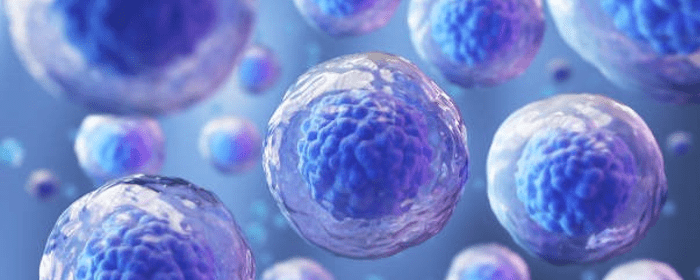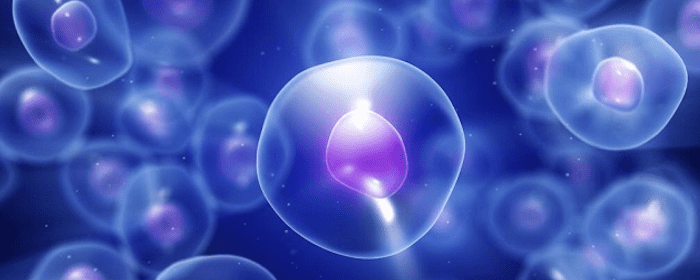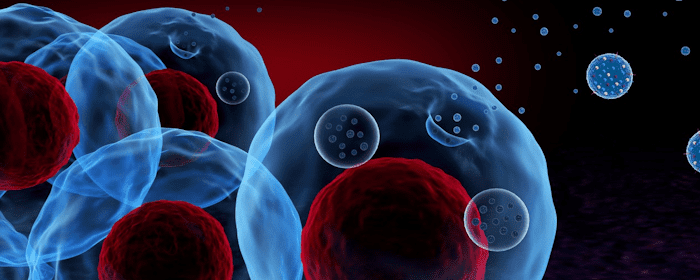
by admin | Jul 26, 2023 | Mesenchymal Stem Cells, Extracellular Vesicles, Regenerative Medicine, Stem Cell Therapy
Researchers continue to tout the potential of mesenchymal stem cells (MSCs) as an evolving approach for the repair of damaged tissue or lost cells.
Specifically, the ability of MSCs to differentiate and secrete beneficial factors and vesicles is believed to play the most influential role in the regeneration of injured tissues and cells affected by various diseases.
Recently, research into the regenerative potential of MSCs has focused on the extracellular vesicles (EVs) secreted by MSCs as an emerging and potential non-cellular therapeutic approach for healing or repairing injured or damaged tissue.
MSC-derived EVs (MSC-EVs), or cell-free therapies, in contrast to treatments based on whole cells, are easier to manage and safer due to lower amounts of membrane-bound proteins such as MHC molecules and their inability to directly form tumors.
In this review, Keshtkar et al. discuss and describe the extracellular vesicles released by MSCs and their therapeutic potential for addressing different disease models.
These EVs are membrane-packed vesicles that are secreted by a variety of cell types and found in a variety of physiological fluids. In addition to MSCs, EVs are also secreted by T cells, B cells, dendritic cells, platelets, mast cells, epithelial cells, endothelial cells, neuronal cells, cancerous cells, and embryonic cells. EVs are also found in urine, blood, breast milk, saliva, cerebrospinal fluid, synovial fluid, and amniotic fluid.
EVs have repeatedly demonstrated that they perform an important role in cell-to-cell communication and have been implicated in a number of important processes, including the immune response, homeostasis maintenance, coagulation, and inflammation.
Several studies have explored the use of MSC- EVs as therapeutic treatment options for kidney disease, liver disease, cardiovascular disease, and neurological disease. The authors of this review report the beneficial therapeutic effects of MSC-EVs in each of the disease models listed above, which include a significant reduction in inflammation, improved angiogenesis, reduced oxidative stress, the suppression of fibrosis, and increased cell proliferation.
Keshtkar et al. conclude that EVs can be easily isolated from MSCs of various origins and can be transferred to target cells to introduce therapeutic effects that include the regeneration of tissue and suppression of inflammation. Additionally, the authors point out that EVs could be an effective, safe therapeutic option.
Considering the potential therapeutic benefits of MSC-EV regenerative therapy, the authors suggest standardizing methods for EV isolation, characterization, and administration as ways to provide safe, effective, and powerful new therapies based on MSC-EVs.
Source: “Mesenchymal stem cell-derived extracellular vesicles – NCBI.” 9 Mar. 2018, https://www.ncbi.nlm.nih.gov/pmc/articles/PMC5845209/.

by admin | Jul 24, 2023 | Mesenchymal Stem Cells, Kidney Disease, Regenerative Medicine, Stem Cell Therapy
What is Kidney Disease?
Kidney disease, also known as renal disease or nephropathy, refers to a condition in which the kidneys are damaged or unable to function properly. The kidneys play a crucial role in filtering waste products, excess fluid, and toxins from the blood, while also maintaining the body’s electrolyte balance and producing important hormones. When kidney disease occurs, these vital functions are compromised, leading to a range of complications.
What Causes Kidney Disease?
Kidney disease can affect people of all ages and backgrounds. Kidney disease can have various causes, and understanding these underlying factors is crucial in managing the condition effectively. There are several primary causes of kidney disease:
Diabetes: Diabetes is a leading cause of kidney disease. High blood sugar levels can damage the blood vessels in the kidneys over time, impairing their ability to function properly. This condition, known as diabetic nephropathy, can progress to chronic kidney disease and ultimately lead to kidney failure.
Hypertension (High Blood Pressure): Uncontrolled high blood pressure puts excessive strain on the blood vessels in the kidneys, leading to their damage. Over time, this can result in chronic kidney disease. Conversely, kidney disease can also cause hypertension, creating a harmful cycle.
Glomerulonephritis: Glomerulonephritis refers to inflammation of the glomeruli, which are tiny filters in the kidneys responsible for removing waste from the blood. This inflammation can be triggered by infections, autoimmune disorders, or certain medications, leading to kidney damage and impaired function.
Polycystic Kidney Disease (PKD): PKD is a genetic disorder characterized by the growth of fluid-filled cysts in the kidneys. These cysts gradually enlarge and interfere with kidney function, ultimately leading to kidney failure.
Urinary Tract Obstruction: Kidney disease can also result from obstructions in the urinary tract, such as kidney stones, tumors, or an enlarged prostate gland. These blockages can disrupt the normal flow of urine, causing kidney damage and infection.
Infections: Severe or recurrent kidney infections, such as pyelonephritis, can cause inflammation and scarring of the kidneys. If left untreated, these infections can lead to chronic kidney disease.
Medications and Toxins: Certain medications and toxins can damage the kidneys if used improperly or in excessive amounts. Examples include nonsteroidal anti-inflammatory drugs (NSAIDs), certain antibiotics, and illicit drugs.
It’s important to note that some individuals may have a combination of risk factors that contribute to kidney disease. Additionally, early detection, regular monitoring, and proper management of these underlying causes can significantly slow the progression of kidney disease and help preserve kidney function.
What Are the Symptoms?
The symptoms of kidney disease may vary depending on the stage and underlying cause but often include fatigue, swelling in the legs and ankles, frequent urination, foamy or bloody urine, persistent itching, and high blood pressure. However, in the early stages, kidney disease may be asymptomatic, making early detection and regular screening crucial, especially for individuals with risk factors.
If you suspect that you have kidney disease, it is crucial to take immediate action and seek medical attention. If kidney disease is diagnosed, it is vital to follow the advice and treatment plan provided by your healthcare professional.
Kidney disease requires ongoing monitoring to assess kidney function, evaluate the progression of the disease, and adjust treatment if necessary. Your healthcare professional will schedule regular follow-up appointments to review your progress, conduct further tests as needed, and make any necessary adjustments to your treatment plan.
Coping with a chronic condition like kidney disease can be emotionally challenging. Consider reaching out to friends, family, or support groups who can provide encouragement, share experiences, and offer practical advice. Support from others who understand the journey can be invaluable.
Left untreated, kidney disease can lead to serious complications such as fluid retention, electrolyte imbalances, anemia, bone disorders, cardiovascular problems, and ultimately kidney failure. In end-stage renal disease, patients may require dialysis or a kidney transplant to sustain life.
What are Kidney Disease Treatments?
Management of kidney disease involves a combination of lifestyle modifications, medication, and, in some cases, medical procedures. Treatment aims to slow the progression of the disease, control symptoms, and prevent complications. Lifestyle changes may include maintaining a healthy diet with controlled salt and protein intake, staying adequately hydrated, exercising regularly, managing blood pressure and blood sugar levels, and avoiding smoking and excessive alcohol consumption.
Regenerative Medicine for Kidney Disease
Regenerative medicine holds great potential for the treatment of kidney disease. It involves the use of mesenchymal stem cells (MSCs) to stimulate the regeneration and repair of damaged kidney tissue.
MSC therapy has shown promising potential for the treatment of kidney diseases. MSCs are a type of adult stem cell that can be isolated from various sources, including bone marrow, adipose tissue, and umbilical cord tissue.
In the context of kidney disease, stem cells have been studied for their regenerative and immunomodulatory properties. They have the ability to differentiate into different cell types, including kidney cells, and can also release various growth factors and cytokines that promote tissue repair and modulate the immune response. Here are some key points regarding the potential of MSC therapy for kidney disease:
Acute Kidney Injury (AKI): MSC therapy has been investigated as a potential treatment for AKI, a sudden loss of kidney function. Studies have shown that MSCs can enhance kidney repair, reduce inflammation, and improve kidney function in animal models of AKI. Clinical trials are underway to evaluate the safety and efficacy of MSC therapy for AKI in humans.
Chronic Kidney Disease (CKD): MSC therapy holds promise for the treatment of CKD, a progressive loss of kidney function over time. MSCs have been shown to have beneficial effects on renal fibrosis, inflammation, and oxidative stress, which are key factors in CKD progression. Preclinical studies have demonstrated that MSCs can ameliorate kidney damage and improve kidney function in animal models of CKD.
Immune modulation: MSCs possess immunomodulatory properties, which can be advantageous in kidney diseases with an immune component, such as autoimmune kidney diseases (e.g., lupus nephritis). MSCs can suppress abnormal immune responses, reduce inflammation, and promote tissue repair, thereby potentially mitigating the immune-mediated damage to the kidneys.
Safety and Delivery: MSC therapy has been generally considered safe, with no significant adverse effects reported in studies. Delivery methods vary but may include intravenous infusion or direct injection into the renal tissue during surgical procedures.
Kidney disease is a condition characterized by impaired kidney function, which can arise from various causes. Early detection, regular monitoring, and appropriate management are essential to slow the progression of the disease, maintain kidney function, and prevent complications. It is important for individuals with risk factors or concerning symptoms to seek medical attention for proper evaluation and treatment.

by admin | Jul 12, 2023 | Adipose, Mesenchymal Stem Cells, Regenerative Medicine, Stem Cell Therapy
Mesenchymal stem cells (MSCs) isolated from a wide variety of tissues and organs have demonstrated immunomodulatory, anti-inflammatory, and regenerative properties that contribute to a host of regenerative and immunomodulatory activities, including tissue homeostasis and tissue repair. The most frequently studied and reported sources of MSCs are those collected from bone marrow and adipose tissue.
In this review, Krawczenkjo and Klimczak focus on MSCs derived from adipose tissue (AT-MSCs) and their secretome in regeneration processes.
Adipose tissue is the most commonly used source of MSCs, primarily because it is easily accessible and is often a byproduct of cosmetic and medical procedures. Like most MSCs, AT-MSCs are able to differentiate into adipocytes, chondrocytes, and osteoblasts; they are also able to differentiate into neural cells, skeletal myocytes, cardiomyocytes, smooth muscle cells, hepatocytes, endocrine cells, and endothelial cells.
In addition, AT-MSCs secrete a broad spectrum of biologically active factors that serve as essential components involved in the therapeutic effects of MSCs, including the ability to stimulate cell proliferation, new blood vessel formation, and immunomodulatory properties; these factors include cytokines, lipid mediators, hormones, exosomes, microvesicles, and miRNA.
Preclinical and clinical studies on AT-MSCs in tissue regeneration were demonstrated to contribute to wound healing, muscle damage, nerve regeneration, bone regeneration, and lung tissue regeneration.
Evaluating these studies, Krawczenko and Aleksandra Klimczak conclude that AT-MSCs and their secretome are promising and powerful therapeutic tools in regenerative medicine, primarily due to their unique properties in supporting angiogenesis.
The results obtained by the preclinical and clinical studies evaluated for this review suggest that the ability of AT-MSCs and their derivatives, including EVs and CM, to deliver a wide range of bioactive molecules could be considered as factors supporting enhanced tissue repair and regeneration.
Source: “Exosomes in Mesenchymal Stem Cells, a New Therapeutic Strategy ….” https://www.ncbi.nlm.nih.gov/pmc/articles/PMC4308409/.

by admin | Jul 5, 2023 | Cardiovascular Disease, Exosomes, Regenerative Medicine
Cardiovascular diseases continue to be the leading cause of death globally, accounting for nearly 18 million deaths each year with heart attack and stroke accounting for 80% of deaths.
Recently, stem-cell-based therapy has demonstrated the potential to regenerate damaged myocardium and to treat a wide range of cardiovascular diseases (CVDs). Specifically, the ability of mesenchymal stem cells (MSCs) to differentiate into cardiomyocytes, endothelial cells, and vascular smooth muscle cells has created a potentially new and promising therapeutic approach for the treatment of CVDs.
Huang et al. summarize the recent advances in MSC therapy, including the role of exosomes in future treatments of CVDs.
Recent studies have demonstrated that MSCs were able to secret cholesterol-rich, phospholipid exomes that were enriched with microRNAs (miRNAs). These exomes are nano-sized particles originating from multivesicular endosomal ranging in size from 30 – 100 nm and contain cytokines, proteins, lipids, mRNAs, and miRNAs. These exosomes are suggested as central mediators of intercellular communication and transfer proteins, mRNAs and miRNAs to adjacent cells.
The miRNAs found in exosomes play an essential role in various physiological and pathological processes by regulating gene expression at the post-transcription level. When applied in the cardiovascular system, miRNAs are internalized into CMCs and ECs and result in cardiomyocyte protection and angiogenesis promotion that has demonstrated beneficial and anti-inflammatory effects including cardiac regeneration, neovascularization, and anti-vascular remodeling; these observed benefits include improved cardiac function after a myocardial infarction (MI), reduced inflammation related to pulmonary hypertension, and increased tissue healing following an ischemia-reperfusion injury.
Huang et al. conclude that the studies evaluated in this review provide evidence that MSC-derived exosomes play an essential role in MSC-based therapy of CVDs including MI, reperfusion injury, and PH. Considering these conclusions, the authors call for additional studies to determine the detailed mechanisms and underlying benefits to determine their exact role.
Source: “Exosomes in Mesenchymal Stem Cells, a New Therapeutic Strategy ….” 12 Jan. 2015, https://www.ncbi.nlm.nih.gov/pmc/articles/PMC4308409/.

by admin | Jun 21, 2023 | Stem Cell Therapy, Regenerative Medicine, Stroke
Recent advances in medical accessibility, technology, and treatment have increased the average human life expectancy, while at the same time, increasing the risk for neurodegenerative diseases and other disorders – including stroke.
According to the CDC, nearly 800,000 people in the United States suffer a stroke each year, with 87% of these strokes being ischemic strokes. An ischemic stroke is a medical emergency that occurs when the blood supply to part of the brain is reduced or interrupted. Without the ability to deliver oxygen or nutrients, brain cells begin to die in a matter of minutes.
Even when identified and treated early, the lasting, long-term effects associated with stroke result in economic and social costs for patients, their families, and society in general. As an example, the CDC estimates that stroke-related costs, including those associated with healthcare and missed days of work, exceed $50 billion dollars in the U.S. each year.
While medical research continues to search for ways to prevent stroke by addressing underlying causes, primary stroke treatment continues to focus on managing stroke progression while also treating related symptoms.
Recently regenerative medicine, also known as stem cell therapy, along with rehabilitation therapy has been presented as an effective stroke treatment. In this review, Berlet, et al. explore the potential synergistic outcomes of stroke treatment observed when combining current advances in stem cell research with known stroke rehabilitation strategies. The authors also review research while considering the advantages and disadvantages of using the combination of stem cell transplantation and rehabilitation as a way to mitigate the devastating effects of stroke.
Combining stem cell treatment with rehabilitation therapy and outside strategies, such as an enriched environment (EE) may enhance functional stroke recovery and allow for an ideal long-term therapy for stroke patients. With the goal of enhanced brain plasticity, these therapies aim to introduce intrinsic or extrinsic stimuli to assist with the reorganization of the brain’s structure, functions, and connections.
The human brain has been demonstrated to be more plastic after experiencing an injury. With EE promoting improved stem cell survival and migration, and stem cell therapy creating the potential for an extended window of treatment, the combination is viewed as a potentially effective therapy when combined.
Preclinical experimentation has demonstrated stem cell therapies to be effective days after an ischemic stroke occurs, providing a very important window of time for critical stroke treatment to occur. While this is certainly promising information, the authors also point out that there has been a disappointing and frustrating disconnect between these preclinical findings and what is observed in clinical experimentation.
Considering this, the authors identify determining the optimal clinical stem cell route of administration, dosage, and timing as key areas of study to better understand – and maximize – the therapeutic potential of stem cells in the treatment of ischemic stroke.
While Berlet et al. calls for additional research into the ideal route of stem cell administration, type dosage, and timing to further confirm the efficacy of stem cell transplantation for the treatment of ischemic stroke, the authors conclude that the addition of stem cell therapy to rehabilitation has significant potential to create a conducive host microenvironment to facilitate the repair process.
Source: “Combination of Stem Cells and Rehabilitation Therapies for … – NCBI.” 6 Sep. 2021, https://www.ncbi.nlm.nih.gov/pmc/articles/PMC8468342/.

by admin | Jun 14, 2023 | Stem Cell Therapy, COPD, Regenerative Medicine
Chronic obstructive pulmonary disease (COPD) is a chronic inflammatory lung disease that causes obstructed airflow from the lungs. Affecting an estimated 15 million people in the United States alone, COPD is characterized by progressively worsening symptoms, including breathing difficulty, cough, mucus (sputum) production, and wheezing, and is most often the result of prolonged exposure to cigarette smoke.
Not just an issue for those in the U.S., COPD has been demonstrated to be a preventable and treatable global health challenge. With an estimated 3.5 million worldwide deaths attributed to COPD each year, the disease is currently the third leading cause of death.
While there have been medical advances in the treatment of COPD, these therapies focus primarily on symptomatic relief and not the reversal of lung function deterioration or improvement in patients’ quality of life.
Since stem cells are known to differentiate into a wide variety of cell types and have been previously used to regenerate lung parenchyma and airway structure, they are believed to be an evolving and promising therapeutic treatment option for those with COPD.
Supported by extensive studies exploring the mechanism of stem cells in the regulation of COPD, experts have demonstrated that stem cells possess multidirectional differentiation potential and are able to differentiate into specific forms of alveolar epithelial cells (type I and/or type II) and participate into the repair of lung tissue structure.
In this review, Chen et al. summarize the most relevant findings of eight clinical trials that explore the treatment of COPD with mesenchymal stem cells (MSCs).
These clinical trials, conducted between the years of 2009 – 2020, examined using different modes and doses of a variety of autologous or allogeneic MSCs, including bone marrow-derived stem cells (BM-MSCs), adipose tissue-derived stem cells (AD-MSCs), and umbilical cord-derived stem cells (UC-MSCs), in the treatment of COPD.
Examining the different types of MSCs used for these clinical trials, the authors conclude that while all types of MSCs have benefits in this application, AD-MSCs and UC-MSCs are very promising, primarily because the source is easily available; additionally, the process of collecting UC-MSCs is non-invasive. Looking at trends in recent clinical trials, the authors find a general increase in the shift toward using AD-MSCS and UC-MSCs and away from BM-MSCs, primarily for the reasons mentioned previously.
Analyzing results of these clinical trials related to mode, schedule, and dosage of administration, the authors found that stem cells administered intravenously into the body concentrated in the lungs for thirty minutes before gradually migrating to the liver; the inability of stem cells to keep stem cells in the lungs for a longer period of time was noted as a potential barrier that could limit the effectiveness of stem cell therapy for this condition.
To address this concern, the authors recommend adjusting the schedule and/or mode of administration, indicating that prior research suggests multiple doses and administration via airway injection using a bronchoscope is a good way to deliver stem cells directly to the lungs.
Chen et al. found that regardless of what type of MSCs and what mode of administration was used, stem cell therapy for the management of COPD has been proven to be safe and without evidence of any adverse events. However, only 2 of the eight clinical trials evaluated for this review demonstrated that MSCs could improve pulmonary function. The results of the other six indicated that MSCs had no effect on pulmonary function.
Considering these findings, and in view of the small number of patients in the two clinical trials demonstrating therapeutic improvement on pulmonary function, the authors call for further research to better understand the effects of MSCs on improvements of pulmonary function.
In closing, Chen et al. indicate that stem cell therapy may have a significant role in the future treatment of COPD and other respiratory diseases and offer a number of suggestions for future clinical trials. The recommendations provided by the authors for future clinical trials examining the therapeutic effects of MSCs when treating COPD include expanding the sample size, extending the follow-up time to a minimum of 2 years, selecting patients with different grades of COPD, considering using AD-MSCs and UC-MSCs (rather than BM-MSCs); and further exploring the effects of MSC on change in other inflammatory, immune, and metabolic indicators.
Source: “Stem cell therapy for chronic obstructive pulmonary disease – PMC.” 15 Jun. 2021, https://www.ncbi.nlm.nih.gov/pmc/articles/PMC8280064/.







 St. Petersburg, Florida
St. Petersburg, Florida
